How to Find and Train for Your Marathon Pace Goal
Focusing on your marathon pace should go hand in hand with your marathon training.
I believe that stamina plays a huge role in your success at the marathon distance.
If you can train yourself to stick to your goal marathon race pace - whether you are aiming for a 3:30 marathon finish time, a 5:00 finish time or a “just finish” race goal, you want to be able to check yourself early on in your marathon in order to avoid hitting the wall or burning out in the later miles of the marathon.
because what is the #1 mistake marathoners make?
Starting out too fast.
Running those first couple of miles at a faster pace than they are capable of sustaining throughout the length of the marathon.
It is easy to get swept up with the crowd, the music, the other runners, and the first 6-10 miles can fly by and you with them if you are not checking yourself.
The best way to check yourself is to know, train, and then execute your marathon at your goal minutes per mile (or kilometer) marathon pace.
Let’s talk about how to do this!
What is your marathon pace dependent on?
so many factors come into play here, but a few that will directly impact your marathon goal pace that you can run at are:
- Your current running fitness level (Vo2max)
- Your current weekly mileage (running volume)
- Your running history
- Your genetics
- Your previous racing history
- Your training plan & training style
- The course route - whether hilly or flat
- Race conditions - especially the weather
- Your nutrition especially your nutritional race strategy
How to find what your marathon pace should/can be:
There are a couple of different ways that you can find what your next marathon pace/predicted finishing time should be.
1. If you have previously run a marathon:
You can aim to take off about 5-10% from your finishing time as your new marathon time goal.

2. Based off of your best performance in the mile. (jeff Galloway calls this your magic mile).
If you know your most recent (current) mile (or 5K, 10K or half marathon) record time then compare it in the following chart to find what your predicted marathon pace might be.
best mile performance to marathon finishing time goal prediction chart:
How about printing out this pacing chart and pinning it to your vision board to help you reach your marathon goal pace!
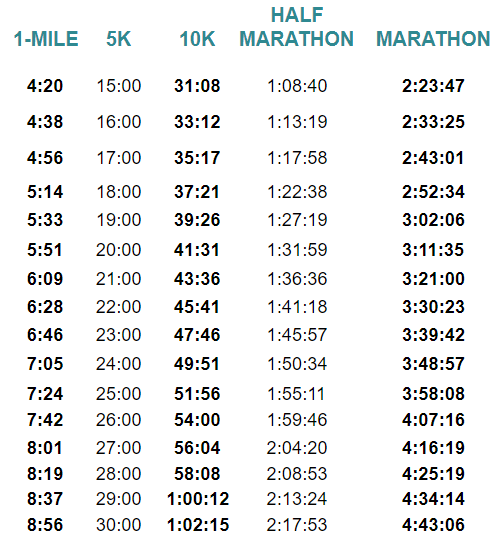
Quick Note: See this page to find out: What is the average time for a half marathon?
3. here is how i like to go about finding my ideal marathon pace and how i coach my runners through my custom training plans to find it as well:
step 1: find your vo2max.
This will tell you your running fitness level.
You can take a Vo2 fitness test (I prefer the 1.5 mile Vo2 fitness test that I walk you through in Train Faster + Smarter) or if you have a smart watch such as a Fitbit or Apple Watch your Vo2max is probably already calculated from your previous runs.
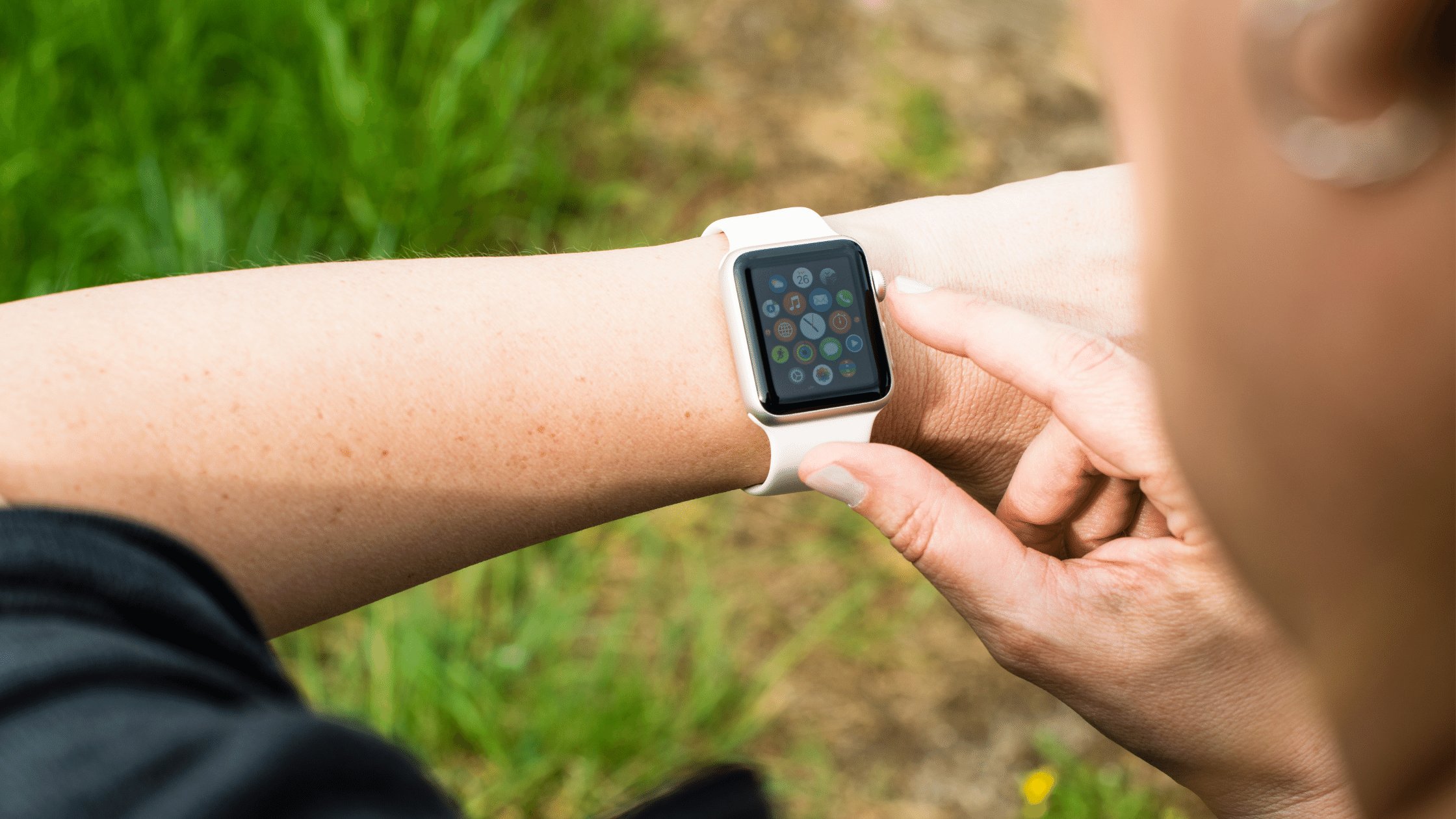
step 2: find your max sustainable speed
This is the maximum speed you can run at which your body can take up the maximum amount of oxygen that it is capable of while still using aerobic pathways.
A calculator is included in Train Faster + Smarter which helps you find this instantly but another way to do so is by running a (formal or informal) 5K.
To do this:
Your pace during that final mile of your 5k is your max sustainable speed.

step 3: decide on what intensity level you wish to run your marathon at.
Intensity is how hard you are working at.
Most beginner marathoners will run at about 60-75% of their intensity while elites can run at 85%+ intensity level. Train Faster + Smarter lays out all of your corresponding marathon pace minute per mile results based off of your Vo2max and your max sustainable running speed from 60-85% of your intensity level.
This makes it easier for you to choose what intensity you should be working at (i.e. you are able to see what a realistic marathon pace is for you based off of your fitness level).
However, you can figure out what marathon pace is matched to what intensity level that you want to work at (60-85%+) by working backwards from your maximum running speed that you found previously through your 5K test.
Start with what you would like your goal race pace to be and figure out what intensity percent that translates to against your maximum running speed.

Now the big question. How do you train for your Marathon Pace Goal?
This is where your marathon training plan should take center stage and walk you through everything that you need to do to get there.
If you are using one of our time goal training plans to help you stick with and train at a certain marathon pace then it is all laid out for you in that training plan.
we offer time goal training plans for:
We help you achieve your marathon pace goal in these plans by including:
1. Hill Sprints
By building stronger legs you are building endurance that will help you maintain a consistent, faster goal pace that you are trying to achieve .

2. Hill repeats
Hill repeats also strengthen your legs and at the same time help strengthen your cardiovascular system. Increasing your lung capacity helps you maintain your marathon pace.

3. An 8 Week focused speed training cycle
Speed training is the way to nail your goal marathon pace! Obviously, with speed training you will become faster and cross your finish line sooner - your ultimate goal.

4. goal pace and progressive long runs
These long runs are designed to get your body used to running at your marathon goal race pace when you are already tired or beginning to become tired.
Now, all of this sounds slightly complicated but it’s not since your road map is laid out in each time goal marathon training package.

Lisa from the blog Mile by Mile has some tips for choosing race goals before beginning your training cycle.
She helps walk you through all the factors to consider when setting race goals.
Recommendations for training at your goal race pace using other marathon training plans
If you want to use a different training plan but want to be sure you are training accurately for your marathon pace time goal then I would highly suggest doing progressive style and goal pace long training runs in the few weeks leading up to your marathon.
We talk about how to do these long runs to meet your marathon pace on this page.

These long runs can also be used as your simulated marathon race. They are the perfect way to blend the endurance and speed factors in your marathon training to see if you are making progress in your pacing and in reaching your finish time goal!
However depending on your marathon goal your long run pace will vary. Check out this page for a more in-depth look into what your ideal long run pace should be and why!
Also, you will want to include some focused speed work in your training for about 8 weeks leading into your marathon race.
Some runners make the mistake of doing heavy speed workouts year round which does not allow for your body to reach it’s peak.
The most important aspect when training for a time goal:
The thing you want most when you are running a marathon with a time goal is to make sure that your body is at it’s peak level going into your marathon race.
To do this only do about 8-10 weeks of focused speed work. My favorite speed workouts for marathoners are:
- Mile interval repeats - once to no more than 2x a week. Read more about interval training here.
- Tempo (or threshold) runs - once to no more than 2x a week. Read more about these here.

Once you choose your intensity level and your corresponding marathon pace in Train Faster + Smarter all of your training paces for each type of training run (your easy runs, tempo/threshold runs, intervals, repetitions, goal pace runs, and progressive long runs) that you should focus on during your marathon training is calculated for you so there is no guesswork!
(These training paces are also calculated out for you in your training packet if you are training with one of our Time Goal Training Plans.)
Last but not least...
Your breathing can also help you to stay on your correct running pace. Breathing is something that you should focus on and work towards perfecting when you are performing in different training workouts.
See this page for proper breathing patterns for workouts such as tempo and interval runs versus easier paced runs.
Related Pages:
👋Sign up to receive the free printable strength exercises for runners: 👇
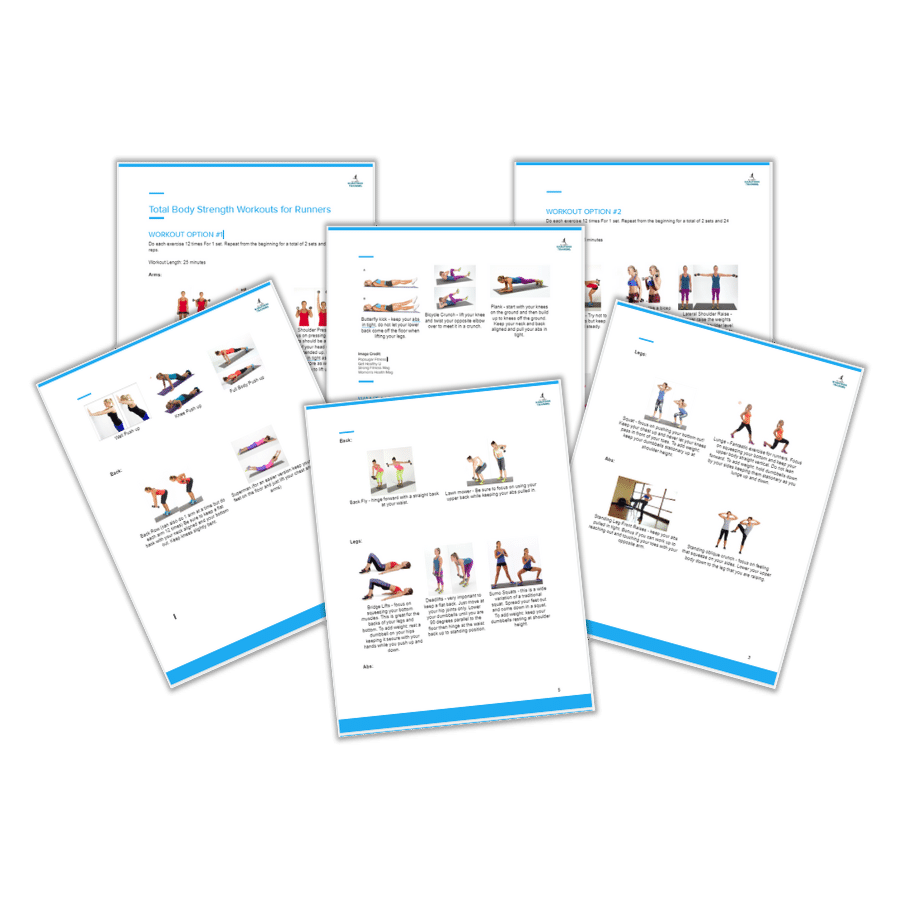 |
As featured on:






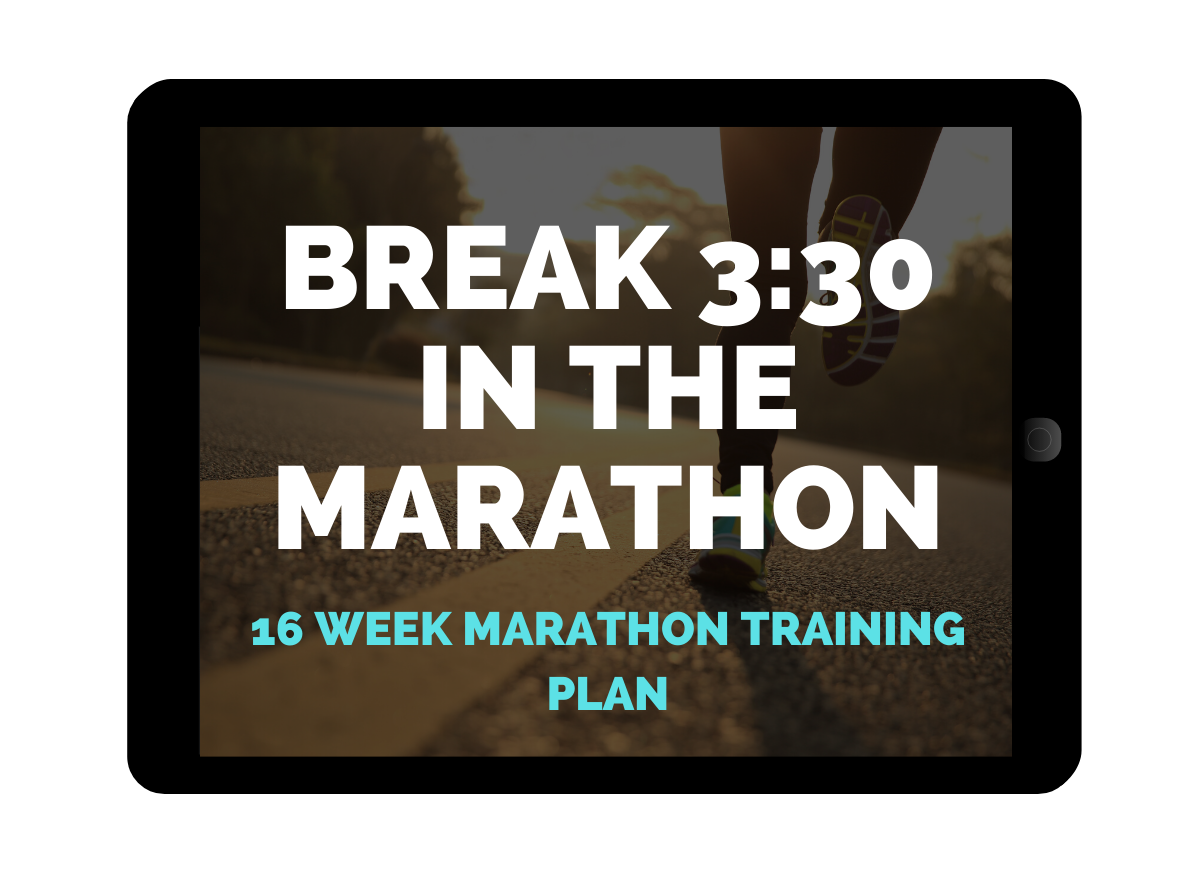
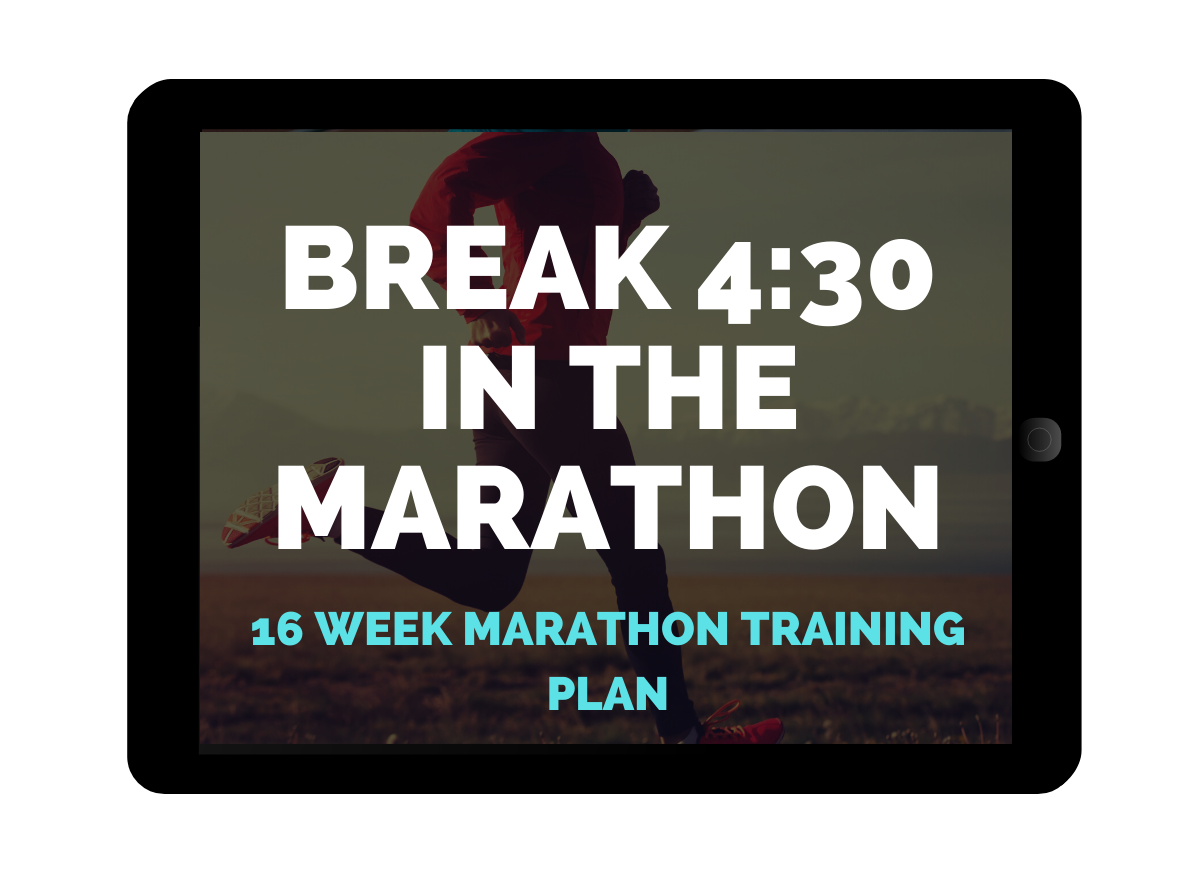
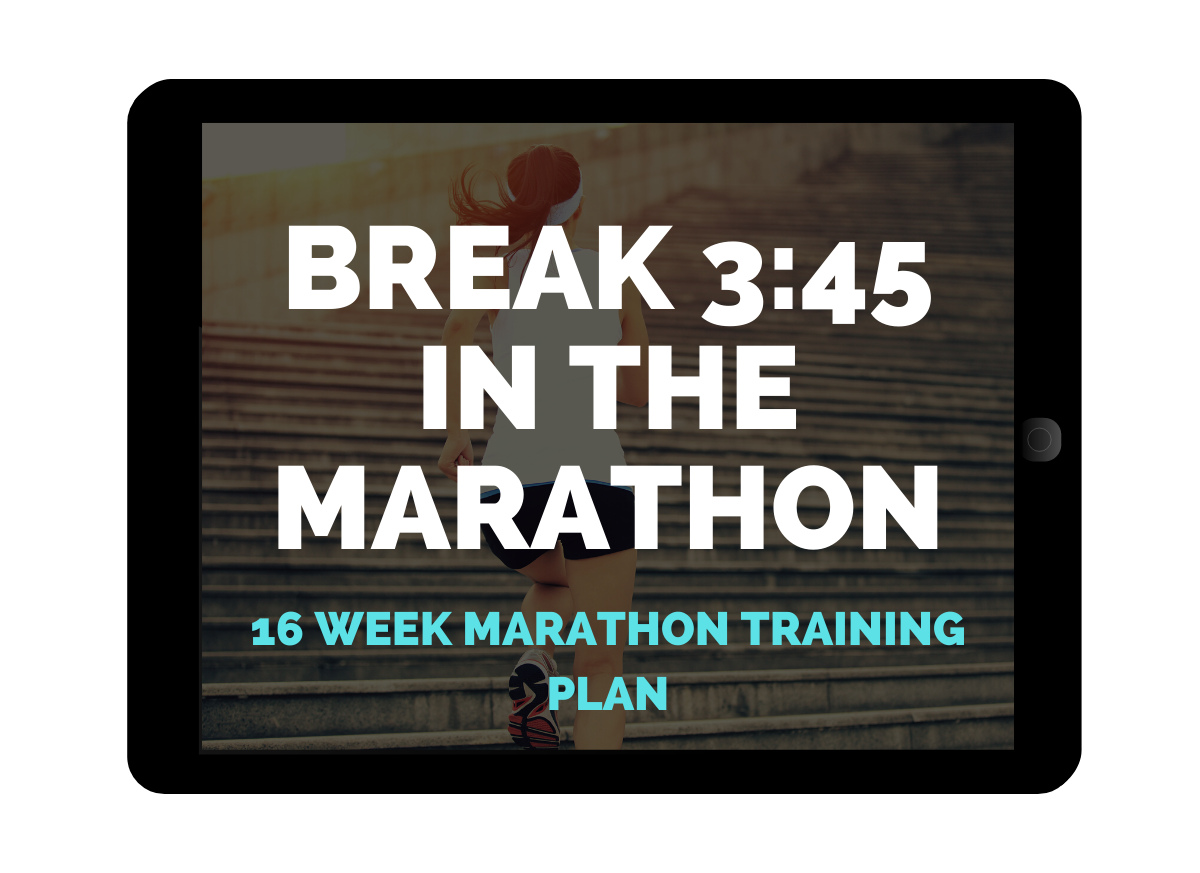
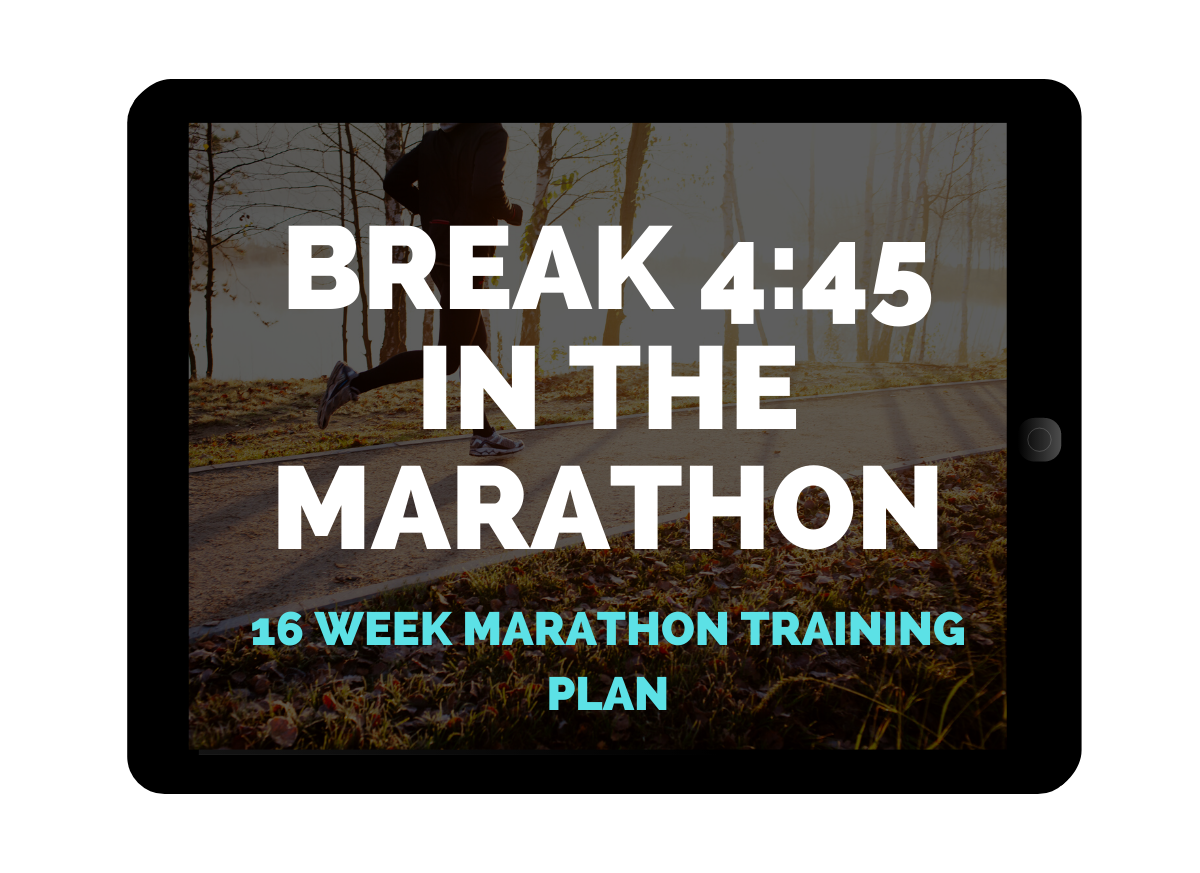
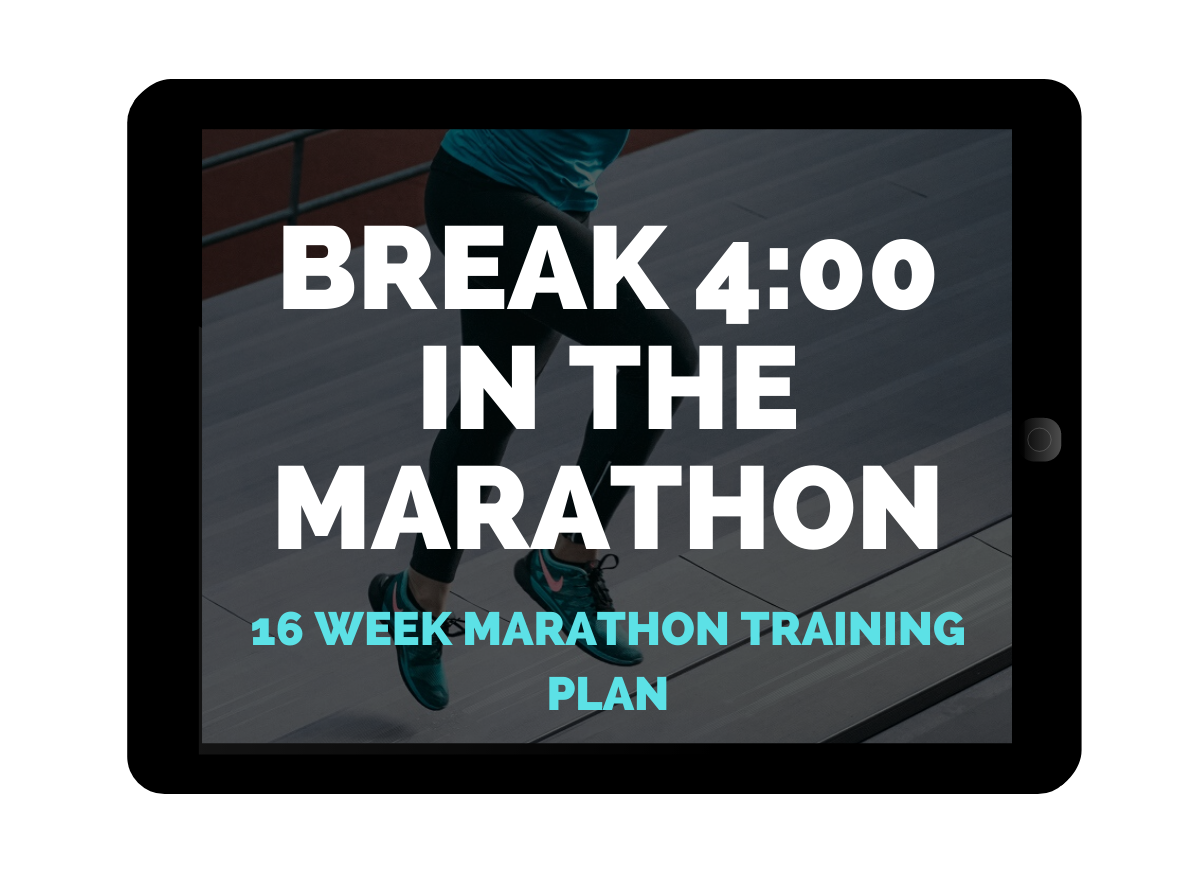
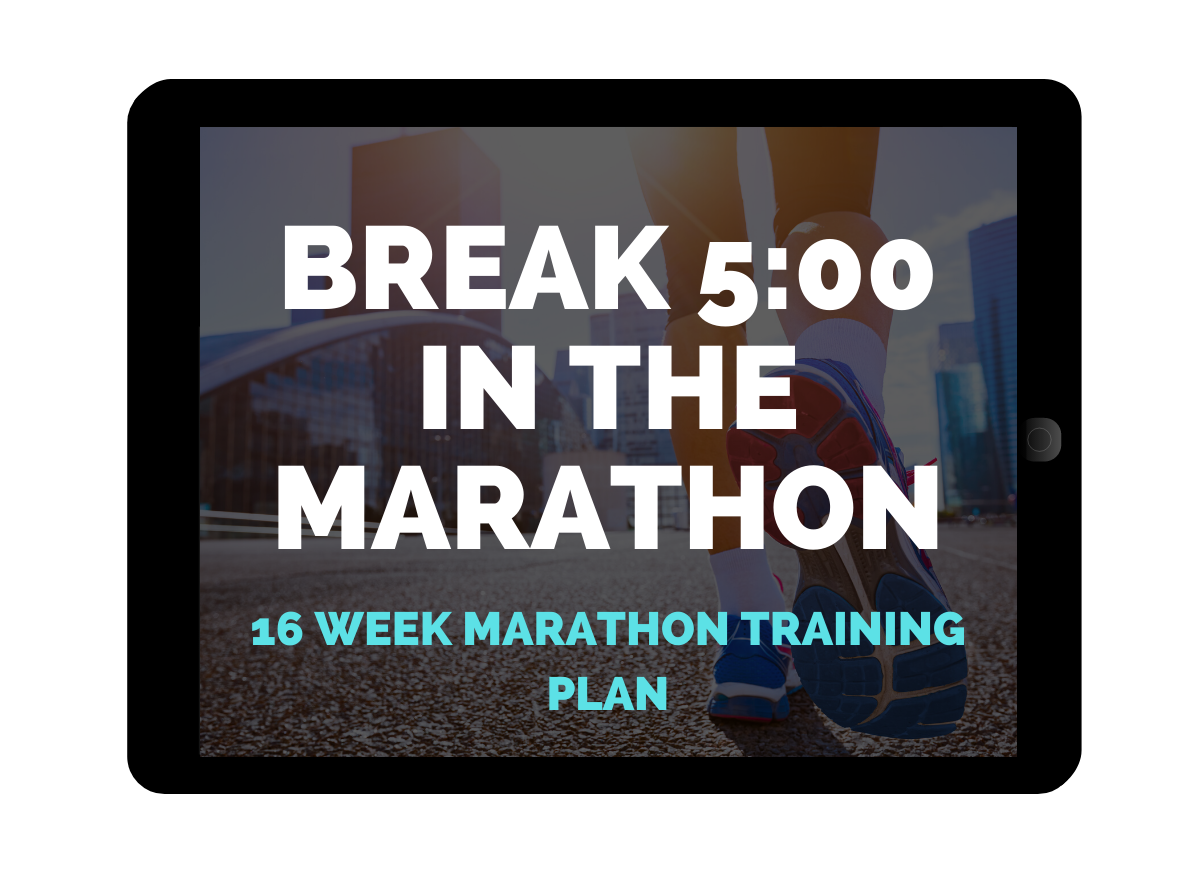
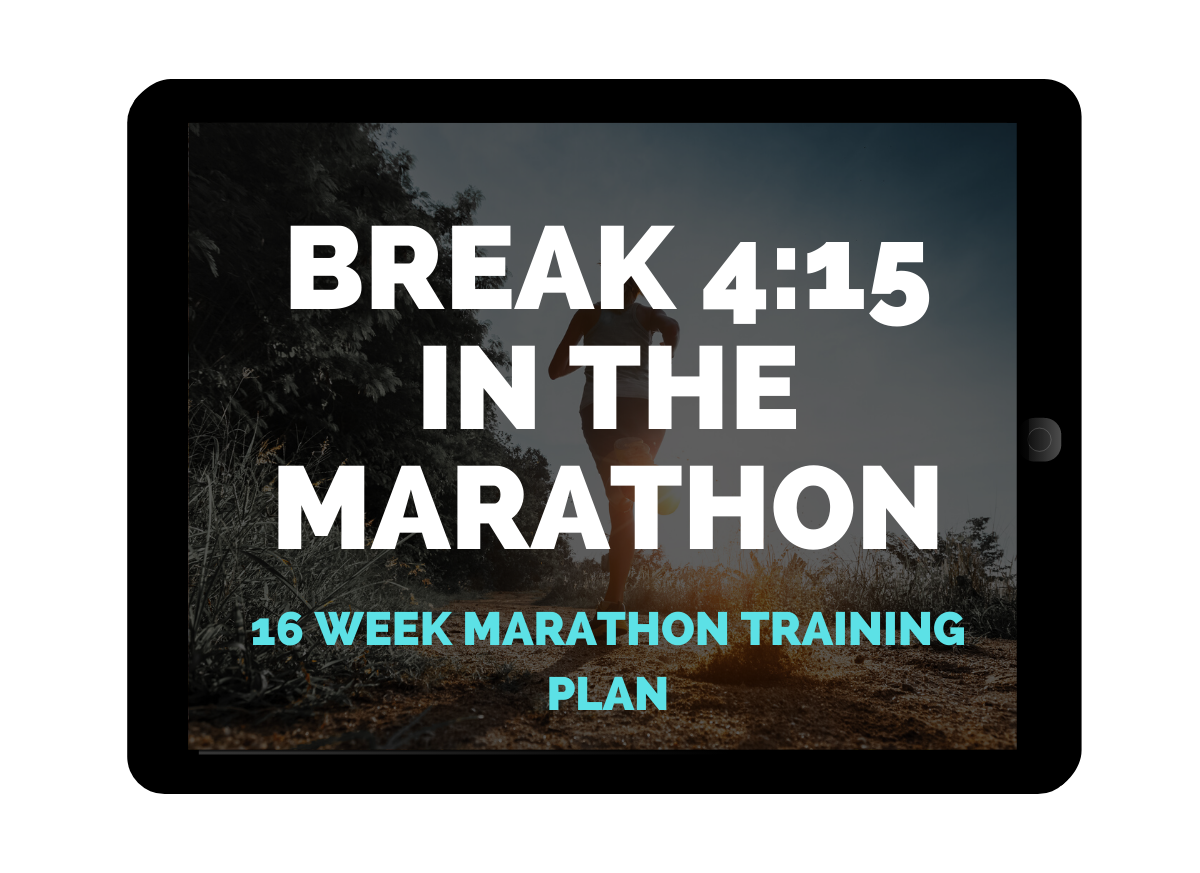




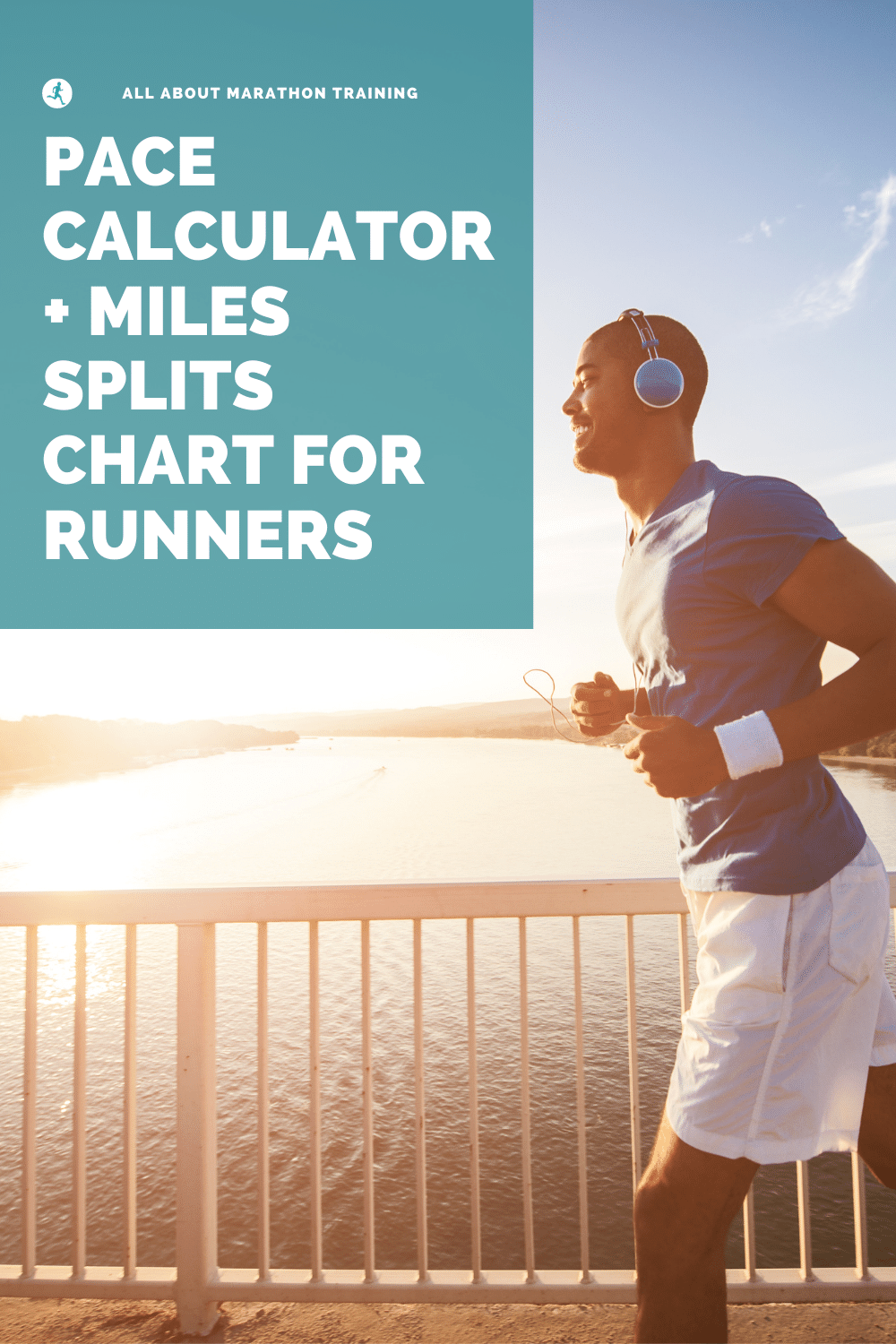


New! Comments
Have your say about what you just read! Leave me a comment in the box below.